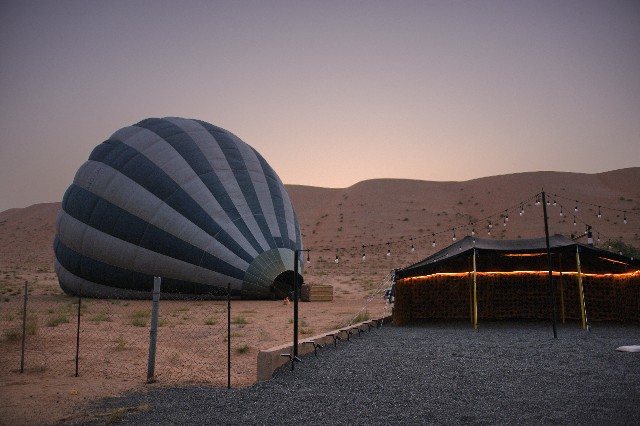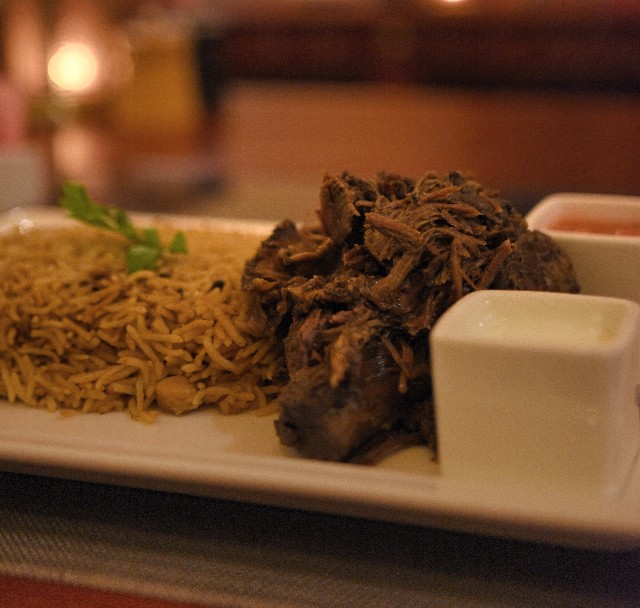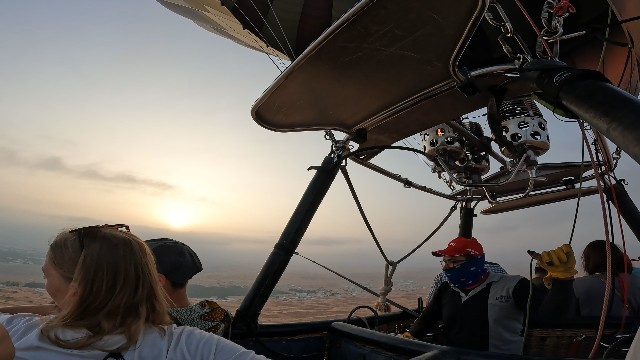
If you want to fully enjoy an untouched desert, head to Oman rather than Morocco or Egypt. Without intending to belittle Egypt or Morocco, the desert in Oman was so impressive that I can’t help but say this. Despite this, why is Oman not well-known in Japan?
Oman, a hidden paradise full of Arabian charm. Among its attractions, self-camping in the Wahiba Desert is particularly appealing. About a 3-hour drive from Muscat International Airport, passing through rugged mountains and scenic landscapes, you’ll be captivated by the beauty of the suddenly appearing desert. This journey will be a dream-like experience for nature lovers and history explorers.
In this article, I will detail the charms of the Wahiba Desert based on my personal experience. While the Sahara Desert and Arabian Desert might be more famous when you hear “desert,” after reading this article, you’ll surely understand the significance of choosing and visiting the Wahiba Desert.
What is the Wahiba Desert?
The Wahiba Desert (also known as Sharqiya Sands) is a desert area in southern Oman that is easily accessible and offers pristine, beautiful desert landscapes. Compared to deserts like the Sahara, the sand here is particularly fine and soft, closely matching the image of a desert that we Japanese people imagine. This desert is notable for its expansiveness and open terrain, making it easy to access and experience natural beauty. Much of the area remains undeveloped, preserving rich nature and untouched landscapes. The sand of the Wahiba Desert is smooth, giving a closer feel to the desert atmosphere Japanese people envision. This desert is also popular for activities and adventures, with its beautiful scenery and dunes surprising and impressing tourists.

The desert areas of Oman have extreme climates, with hot, humid sunshine during the day and temperatures dropping sharply at night. Daytime temperatures can reach over 40°C in summer, but often drop below 15°C at night. This contrasting temperature difference makes camping in the Wahiba Desert special.
Preparing for Camp

Before starting self-camping, it’s important to prepare the necessary equipment. Hats and sunscreen to protect from strong UV rays during the day, and warm clothing for the cold nights are essential. Also, it’s a good idea to prepare cameras and observation equipment as you might encounter unique landscapes, Arabian Peninsula-specific plants, and animals in the Wahiba Desert.
This time, I had camping equipment prepared by a local tour company. While some might want to use their own camping gear, I wouldn’t particularly recommend it considering the hassle.

And don’t forget to bring plenty of water and snacks. The scorching desert mercilessly robs your body of moisture. It’s important to try to prevent dehydration by consuming not only water but also salt at the same time.
The Journey to the Wahiba Desert Begins
So, on the day. We left Muscat early in the morning and headed towards the Wahiba Desert. Our guide was a Tanzanian-Omani who put me in the passenger seat and skillfully drove while giving directions. This encounter marked the start of our journey, and the road to the desert became increasingly interesting.

In the car, we enjoyed local snacks. Among them was “Chips Oman”, which allowed us to savor a uniquely Omani flavor. As the name suggests, Chips Oman is a potato chip originating from Oman and is quite popular in the Middle East region. While the package design might look a bit intimidating, it’s a crispy potato chip familiar to Japanese people, with a unique spiciness added by its own seasoning using onion and chili pepper. Locals unanimously recommend this snack, and it’s understandably delicious. Its addictive taste even leads some international students and expatriates to buy large quantities of Chips Oman like brokers every time they return home. These snacks provided an excellent opportunity to learn about Omani culture and food, adding a new dimension to our journey.

Leaving Muscat behind, we pass through scenic mountain roads and head towards southern Oman.

The journey to the desert was truly the beginning of an adventure, with the landscape unfolding from the car window seeming almost otherworldly. The beautiful rock faces emerged, followed by growing anticipation for the endless sand dunes of the Wahiba Desert.
Along the way, we encountered camels and goats walking freely. In the desert, these animals roam freely within their territories. Their posture contained a beautiful message of harmony and coexistence with nature.

As we drove, the silhouettes of camels forming a caravan were beautifully outlined against the sunset. With loads on their backs, their leisurely progress through the desert created a fantastical scene as if time had stopped.
As we approached the desert, we decided to ask local Bedouins for directions in a settlement called Bidiyah.

Bidiyah is a desert settlement known as the gateway to Wahiba Sands. From here on, it’s dangerous to navigate without local guidance. Fortunately, a kind Bedouin who happened to be there offered to lead the way by car, and my guide and I followed, aiming for the top of the sand dunes.


Driving in the desert is not easy, and caution is needed when going up and down sand dunes. One mistake could easily lead to overturning. However, our guide’s driving skills were impressive, and we were able to reach our destination safely. Driving in the desert tickled our sense of adventure and became a new challenge along with the scenic views.

At that moment, I couldn’t contain myself and decided to finally take out the drone for which I had previously obtained permission from the Oman Aviation Authority. The desire to capture the expanse of the desert from the air prevailed, and the sight of the drone ascending over the sand dunes was like a scene from a movie. An adventure of chasing the sunset while operating a drone from the passenger seat, swaying in the car.

The sight of the car kicking up sand as it ran through the desert, illuminated by the setting sun, was a truly grand and fantastical landscape when viewed from above. The guide maneuvering the car on the desert’s rough terrain while I simultaneously operated the drone – this moment of sharing our respective skills was simply breathtaking.

※For information on drone flight application procedures overseas, please refer to the article below.
The moment we reached the top of the sand dune was indescribable.
As the sun set over the sprawling desert, the sand dunes bathed in the sunset turned a beautiful orange. Sharing this moment deepened the bond between me, the guide, and the Bedouin who led us.

The desert sand was surprisingly fine, raising dust with every step, its softness like silk. The joy of climbing the sand dunes was filled with the sensation of sand gently embracing your feet. Simply walking through the sprawling desert allowed you to experience a sense of becoming one with the sand dunes.

Stepping barefoot into the expanse of the desert, the surprise and beauty expanded even further. Various colors of sand mixed exquisitely, glittering in the sunlight. Orange, red, gold, and other vibrant sands illuminated by the sunset seemed to elegantly tell the history of the desert.

At dusk, the Wahiba Desert is dyed by the sun’s light, and the spreading sand dunes change from orange to pink, overwhelming in their beauty. When choosing a campsite, it’s best to select a place without obstructions and away from town lights to better enjoy the night sky stars.
As night falls, the silence deepens, and it feels as if time has frozen, with complete silence spreading. Looking back now, I feel the word “silence” is used too casually in our daily lives. Have we ever experienced a moment where we are surrounded by such complete silence, hearing nothing but the sound of our own breath, heartbeat, and pulse?
Before I knew it, a sky full of stars had spread out.

At night, constellations can be clearly observed, and the galaxy emerges in the desert darkness. This beauty of the starry sky can be enjoyed due to the absence of light pollution from cities, and the sight of the Milky Way spreading out is like being in a fantastical dream.
What was interesting was that the guide didn’t know the term “Milky Way.” It wasn’t just that he didn’t know the English word, but it seemed he wasn’t familiar with the concept of the Milky Way itself. In Oman, where the Milky Way can be observed so beautifully, is it perhaps too familiar to be considered something special enough to put into words? Or is it evidence that the Greek mythological astronomical view, from which the term “Milky Way” originates (referring to the goddess Hera’s milk), has not been accepted in Islamic lands throughout their long history?

As a thank you for telling me about the Milky Way, I learned about the ecology of the Wahiba Desert from the guide. He had extensive knowledge about the desert and taught me how to survive the beauty and harshness of the desert that changes between day and night. My knowledge of desert plants and animals also deepened, helping to foster respect for the desert ecosystem and nature.

Among the most interesting was the talk about scorpions. In Oman’s deserts, you need to be careful of scorpions. Their venom is fierce, and there’s a danger of death if you don’t rush to a hospital within 24 hours of being stung. And to identify the species of scorpion, you need a photo of the scorpion you’ve stepped on when evacuating. This is important for subsequent medical treatment, and careful actions are required to prepare for the threat of scorpions. As night falls, you can sense the presence of life in the desert. Apparently, in winter, scorpions creep closer seeking warmth, so it’s essential to check for scorpions behind and inside tents when packing up. In the twilight, finding small scorpion footprints requires careful work in folding the tents.
As we were talking about this, Omani local cuisine was spread out on top of the sand dune.

I welcomed an exciting night, watching the guide enthusiastically cooking by the campfire. The main dish of the day was Mishkak (مشكاك, beef skewer barbecue), a traditional Omani dish. The sight of it being carefully cooked in an open-air kitchen in the middle of the spreading desert was truly a special moment to feel the taste of Arabia.
Cooking Mishkak requires unique skills. The meat is prepared with special spices and herbs, then slowly grilled over charcoal. Its aroma spreads, filling the desert on the night breeze. Unable to wait any longer, the cooked beef skewers were served under the stars scattered in the night desert. Each bite contained the condensed essence of Oman’s climate and culture, spreading the aroma and taste of Arabia with every mouthful. The harmony of tender meat and spices, along with the quietness of the desert, filled our senses.





